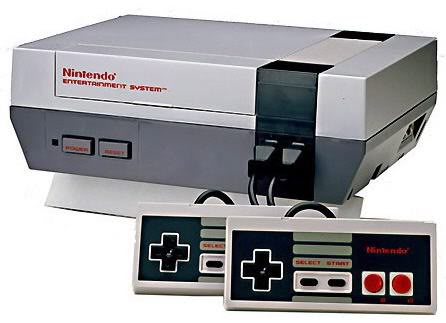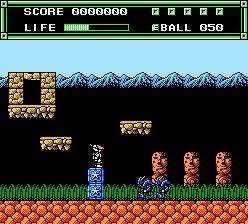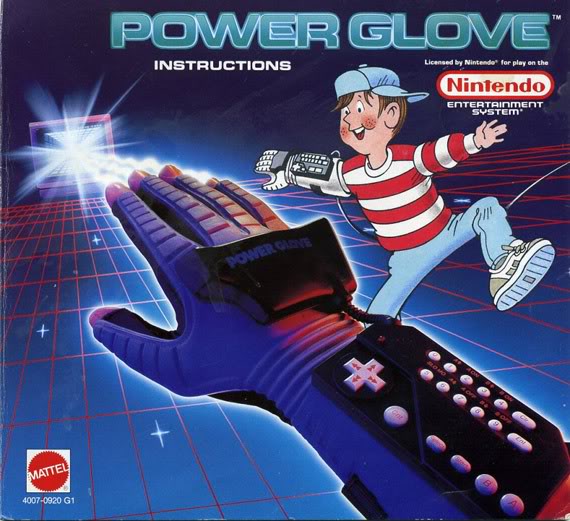Editor's note: With the 25th-anniversary milestone of Nintendo's gray box looming, Jeremy — who was born a mere two months for before its U.S. debut — took the opportunity to look over the console's storied history. I grew up mashing buttons on the NES's classic controller, and this article definitely put a smile on my face. -James

The Nintendo Entertainment System and I nearly share a birthday. I turn 25 this month, and the NES turns 25 in October. I was two months old when it came out, and I actually got mine when I turned five, also on my birthday. The system came with a Power Pad and a multicart featuring Super Mario Bros., Duck Hunt, and World Class Track Meet. It’s safe to say that the NES began my foray into this crazy hobby and influenced my life in the process.
This is probably not an uncommon story.The NES was the product that brought the hobby back from the brink after the industry crash of 1983. The black, gray, and red console found its way into millions of homes across the country along with such landmark titles as Mega Man 2, Final Fantasy, Castlevania, and of course, Super Mario Bros.
Now, as its 25th anniversary approaches, it’s time to take a nostalgic look back at why the NES was so significant.
The moment when an awesome game popped up was the thing we lived for back then. The neat thing about the era was that it was truly a Wild West of game development.
Developers often threw things against the wall just to see what stuck — like Clash at Demonhead, an influential nonlinear platform shooter. Mishmashed concepts like this were not uncommon, and what games lacked in polish they often made up for in concept.

A few years after I got my NES, I experienced my own awesome discovery with Xexyz, a Hudson Soft hybrid game that mixes a side-scrolling platform shooter with a horizontal shmup. It also features an economy system for buying upgrades. The different stories of people with discoveries like this would go on and on. Friends often grouped on school playgrounds for clandestine meetings about these hidden gems.
The subcultural climate was very different than what we know today. The Internet wasn’t an omnipresent resource, and widespread game coverage was practically nonexistent until the Nintendo Fun Club newsletter in 1987 (which later became Nintendo Power).
In addition, kids were the main audience for games, which stands in stark contrast to wide appeal they hold today. As such, enthusiasts had almost no way of researching what games to purchase besides word of mouth. The only direct way to judge a game before buying it was the box, and if you’ve seen some of the cover art from the 80s, you have to wonder how any game shipped even a single unit.
Not that there weren’t plenty of central pillars for the NES library. The Mario games defined the platformer for years to come. The Zelda series evolved in-game exploration by leaps and bounds. Castlevania created the ultimate action experience. Mega Man 2 perfected the platform shooter with fun and balanced mechanics. And Kirby’s Adventure pushed the system to its limits in its twilight years, delivering an amazing audio-visual experience within a high-quality platformer.
The vast majority of titles were unpolished, and it was amazing that some companies could offer such a finely tuned and complete products. The arrival of the NES foretold a future of innovation and impressiveness that would transcend what people of the time thought was possible.

The games were only part of the equation. The physical hardware was a big part of the experience, too, starting with its iconic controller. Nintendo paired a cross-shaped joypad with two actions buttons, and the result was a simple, yet surprisingly flexible, controller. It's clearly the inspiration for the Wii Remote.
The console and the cartridges were boxy and rigid, but at the time, they seemed far more compact than the competition. An odd quirk with the design sometimes caused games to boot incorrectly. This led to many urban legends about how to get the system to work more reliably — the most well-known of which is blowing on the pin connectors. This process was integral to the overall experience, and it has worked its way into the lore of the NES. It's even being referenced in faux-retro releases such as Dark Void Zero.
The NES also had a wealth of peripherals made for it, many of which became almost as iconic as the system. The Power Pad — which predates Wii Fit by two decades — was a surprisingly forward-thinking concept that encouraged players to get off the couch and be active. Likewise, the Zapper, one of the earliest home-use light guns, provided a prototype for the point-and-shoot action that Nintendo would later incorporate into the Wii Remote.
 Not all the peripherals were winners, though. The Power Glove was a very good idea: play regular games using only hand motions (see Microsoft's Kinect). In practice, however, players had to wiggle two fingers as a substitute for the two action buttons rather than using more natural gestures. Pair that with complicated codes that you had to input before starting each game, and you had a controller that was nigh useless. Its visual design was so striking, however, that it became a phenomenon all its own.
Not all the peripherals were winners, though. The Power Glove was a very good idea: play regular games using only hand motions (see Microsoft's Kinect). In practice, however, players had to wiggle two fingers as a substitute for the two action buttons rather than using more natural gestures. Pair that with complicated codes that you had to input before starting each game, and you had a controller that was nigh useless. Its visual design was so striking, however, that it became a phenomenon all its own.
The 8-bit style that ruled the day back then was cutting edge, but developers eventually abandoned it in favor of more technologically impressive designs. In recent years, however, retro graphics have made a comeback and games are beginning to utilize the style again.
Mega Man 9 and 10 joyfully sport the same overall look as the first entries of the series and are all the better for it. It’s telling that Capcom has returned to this look. Developers are learning that they needn't discard old paradigms just because they seem outdated. 8-bit graphics have a sleekness that is timeless.
What more can we say about the NES? It brought an entire industry back from the brink of failure. It showed a generation the possibilities of a medium in its infancy. It influenced future hardware designs and foretold profitable market trends. But most importantly, it set the tone for ongoing saga of one of the world's most popular pastimes by providing a library that was a quantum leap beyond what most people expected.
Being a kid back then was an exciting time because we experienced so much innovation and fun without even knowing we had found it until we played it. I owe my love of games to this system for introducing me to the endless potential that it showed me.
Jeremy Signor also contributed to Gamespite Quarterly #5: The NES Turns 25, 440 pages of NES nostalgia available now. More information on the book can be found at gamespite.net.
VentureBeat's mission is to be a digital town square for technical decision-makers to gain knowledge about transformative enterprise technology and transact. Learn More
